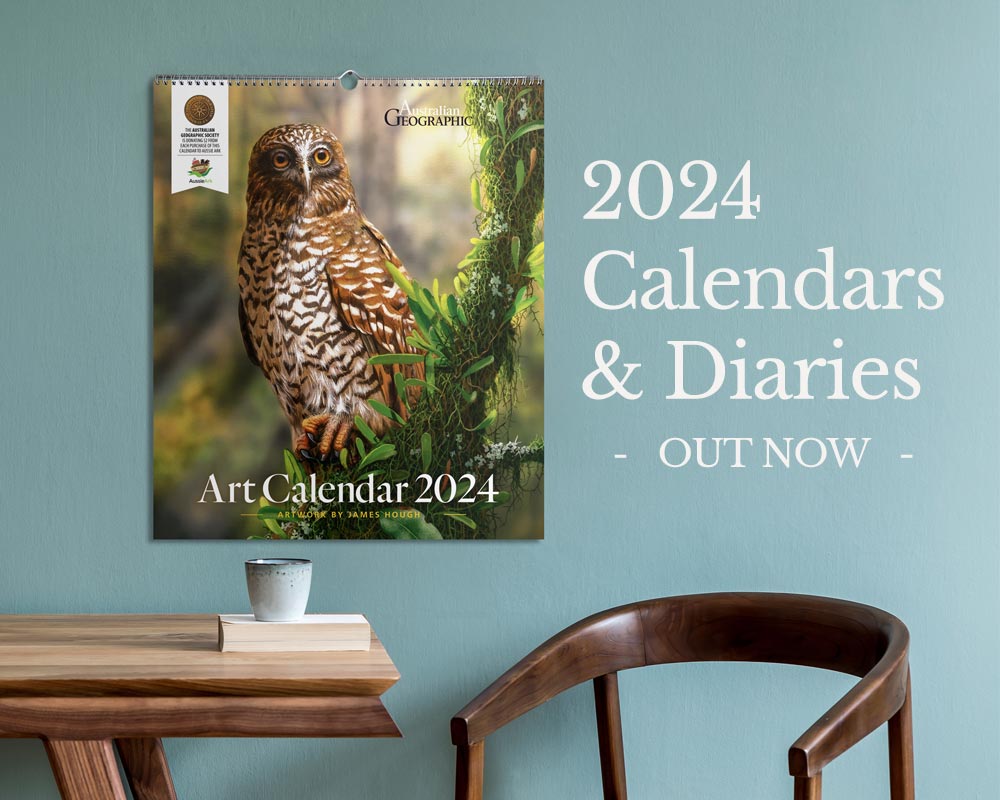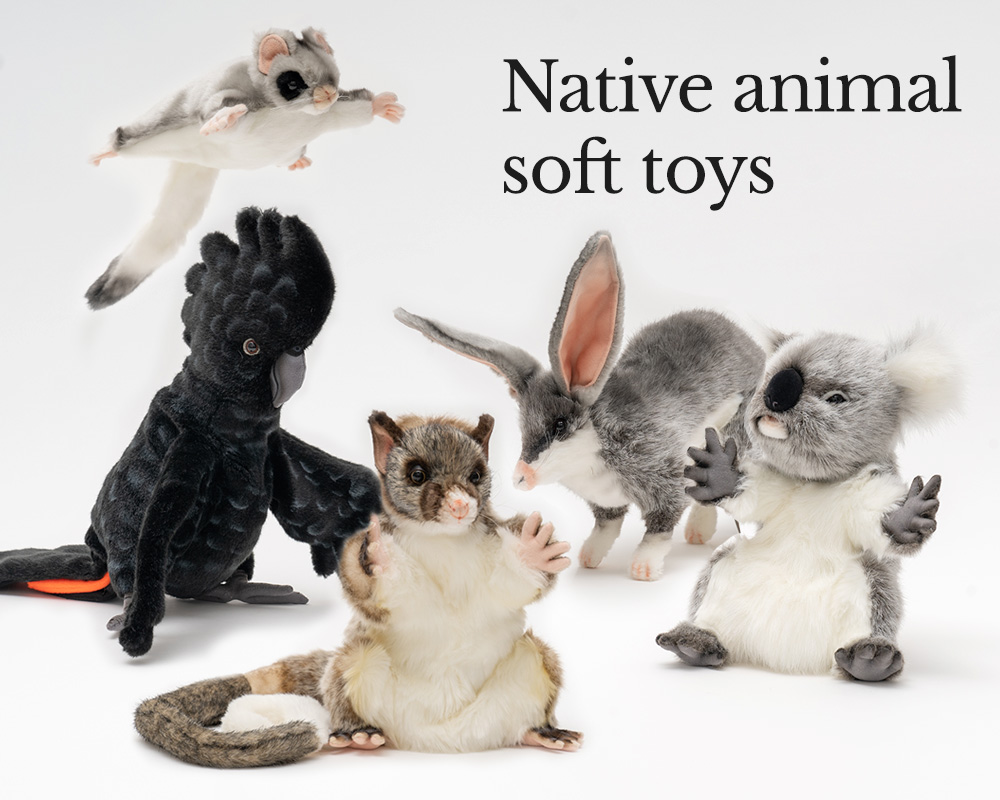ANZANG 2014 Animal Behaviour shortlist

PRISONER OF WAR, UNIDENTIFIED SPECIES. These ants, some with limbs missing, were locked together in battle – allowing just enough time for this image to be captured. The central ant (perhaps caught in the wrong territory) had been taken captive or was going to be killed by the three ants surrounding it. Botany Bay National Park, Kurnell, New South Wales. Canon EOS 400D, Canon 100mm f/2.8 macro, 1/125, f/8, ISO 800, handheld
Photo Credit: Jesse McCoullough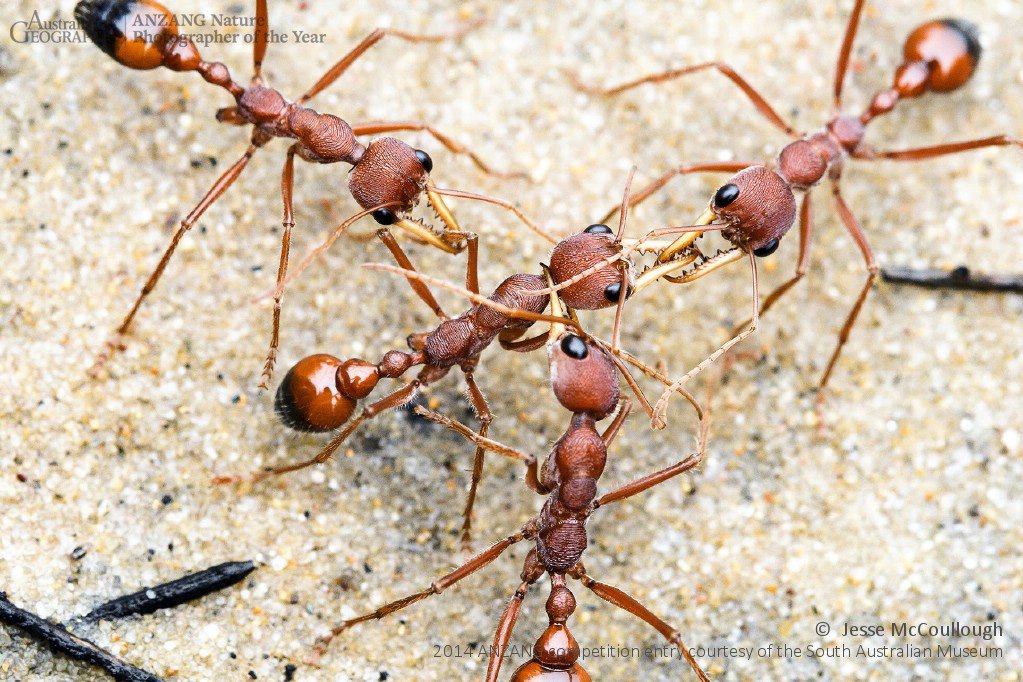
GREY NURSE SHARK, CARCHARIAS TAURUS. Grey nurse sharks gather among rocky
gutters off Seal Rocks for a few weeks each year. This exceptional meeting is brief,
difficult to predict and a challenge to photograph. On this day, I was greeted by a breathtaking moment with a dense aggregation of sharks. Seal Rocks, New South Wales
Nikon D300, Sigma 10-20mm, 1/200, f/5.6, ISO 400, twin DS160 strobes, Ikelite housing, handheld
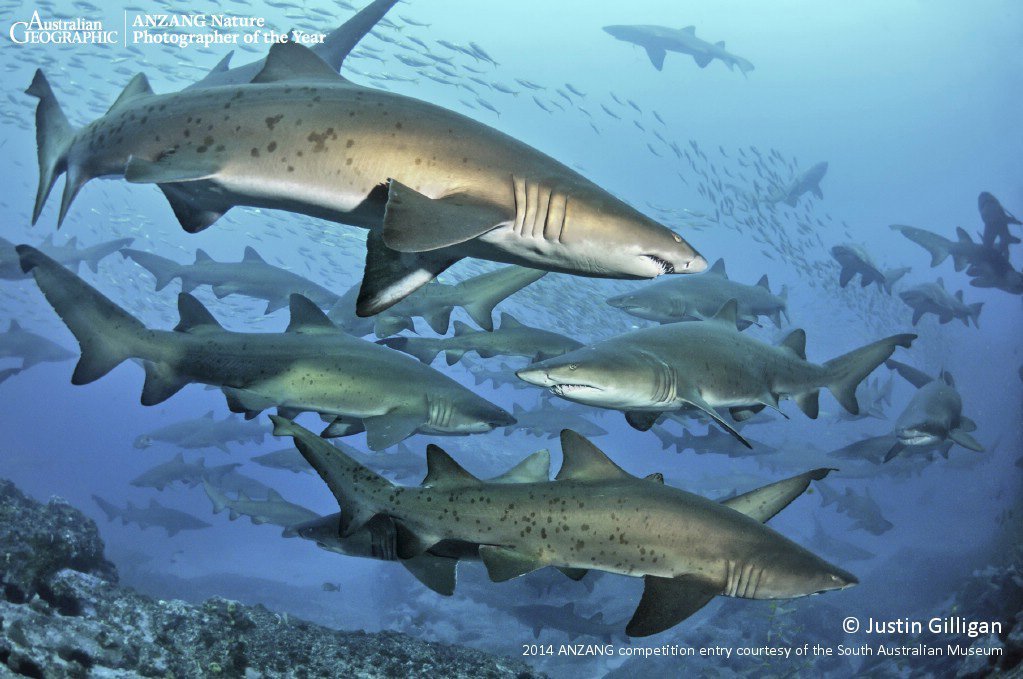
UNIDENTIFIED SPECIES. The egrets that come in to fish on the mudflats near the Cairns Esplanade each evening are able to pluck fish after fish from the shallow waters with an alarming rate of success. As worrying as this must be for the fish, it sets the scene for some amazing photographs. Cairns Esplanade, Cairns, Queensland. Nikon D5100, Nikon AF-S Nikkor 300mm f/4D IF-ED, 1/1000, f/4,
ISO 560, handheld
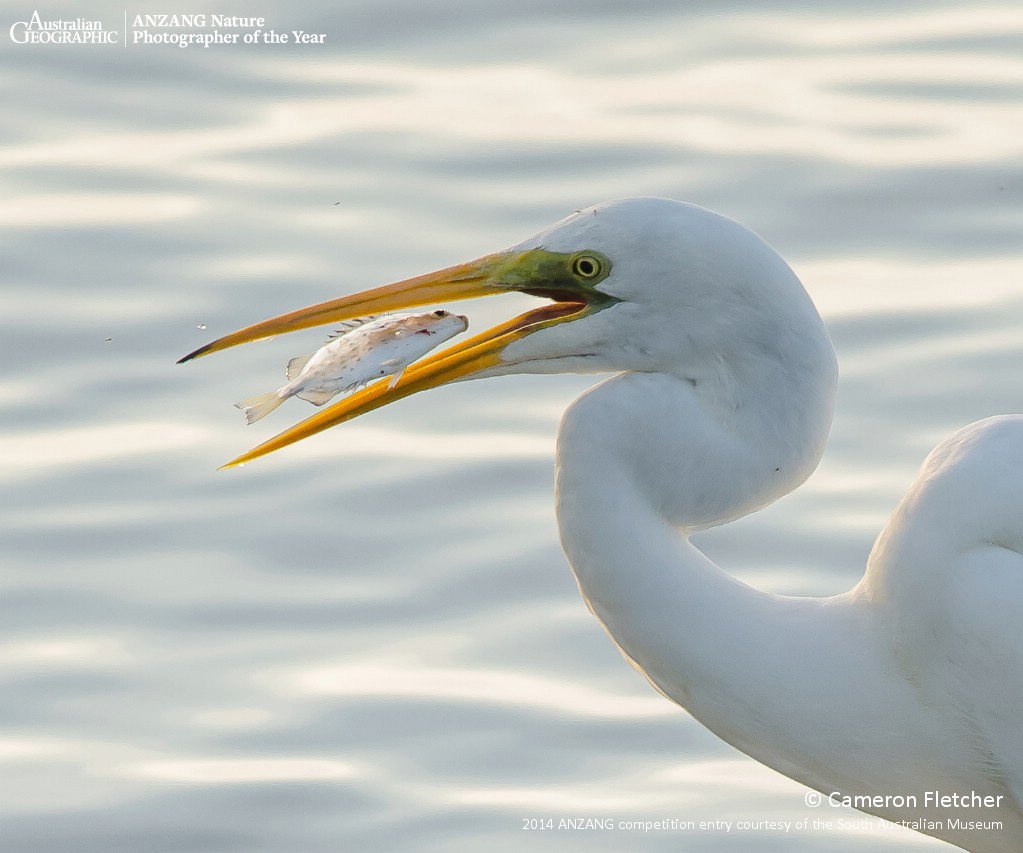
EASTERN OSPREY, PANDION CRISTATUS. An eastern osprey takes to the air with a large mullet in its talons. Ospreys carry their prey parallel while in flight, reducing air resistance.
Golden Beach, Queensland. Canon EOS 7D, Canon 300mm F/3 + 1.4x TC, 1/500, f/7.1, ISO 100, handheld
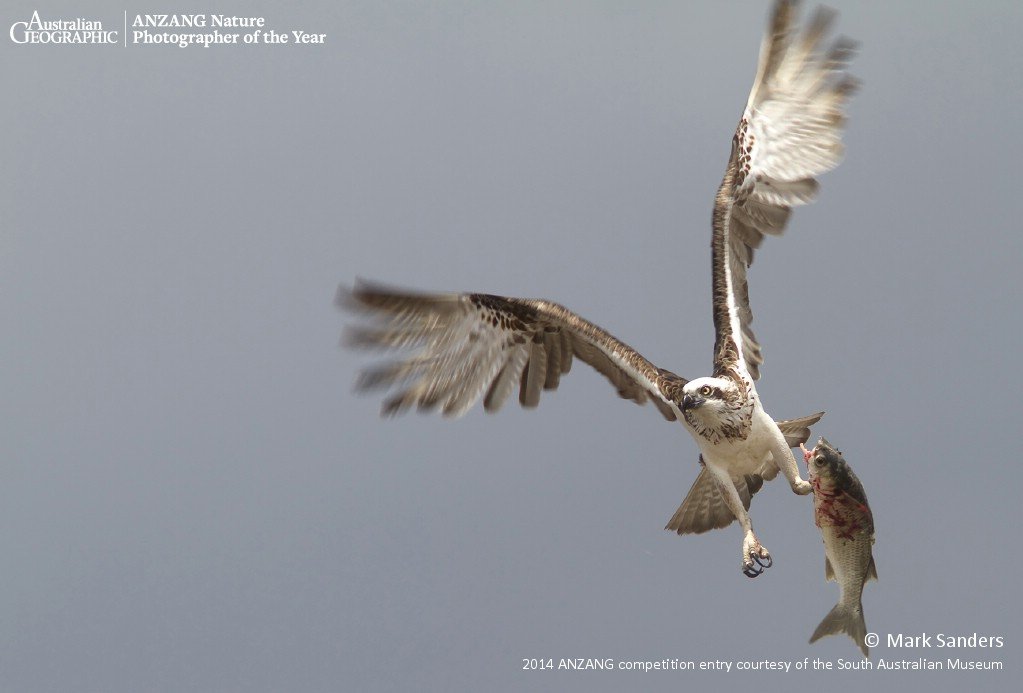
NANKEEN KESTRELS, FALCO CENCHROIDES. As these nankeen kestrels mate, the male balances on the female’s back with its claws pointed inward, careful not to pierce the female’s delicate skin. Dee Why, New South Wale. Canon 5D Mk III, Canon 800mm f/5.6 L IS + x1.4 extender, 1/2500, f/11, ISO 1600, Miller tripod with Wimberley
gimbal head
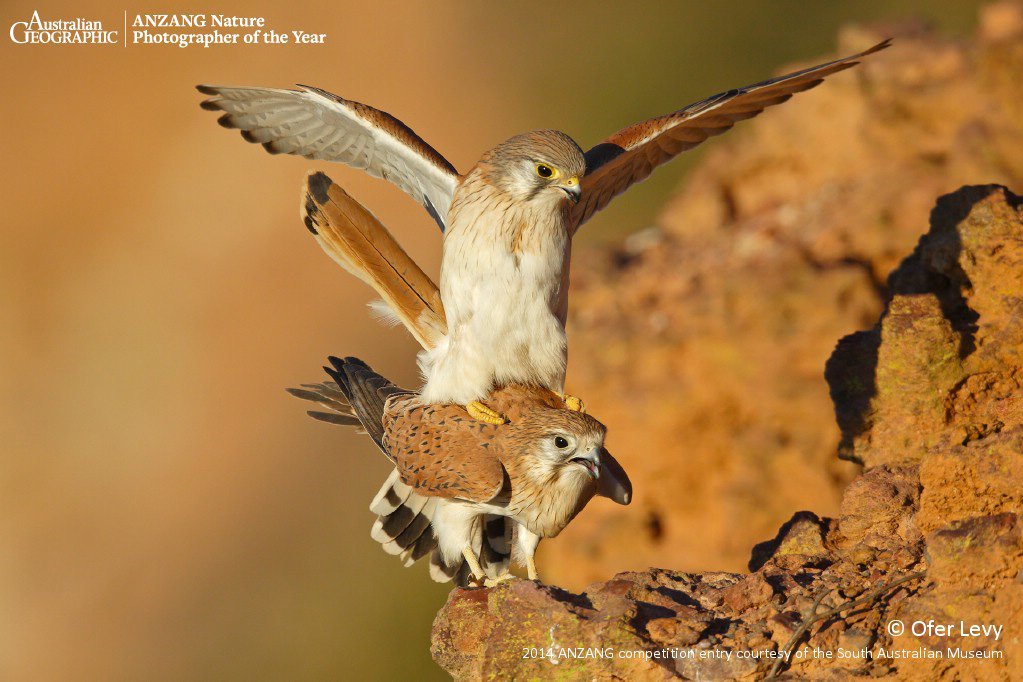
SOLDIER CRAB, MICTYRIS LONGICARPUS. These soldier crabs were poised near the entrance to a burrow. It looked as though they were comparing body size, and the clear disparity between them meant that the conflict was resolved without a fight. Similarly sized rivals tend to fight to determine who is going to occupy a burrow. Stockton Bridge, Stockton, New South Wales. Canon EOS 1D Mk IV, Canon 800mm f/5.6 L IS, 1/800, f/14, ISO 800, lens supported on a flat rock
Photo Credit: Ofer Levy
UNIDENTIFIED SPECIES. This wasp taps her antennae – which are sensitive to vibrations and scent – in search of a suitable host larva upon which she will lay her eggs using her long ovipositor. After hatching, her young will feast on the host while it is still alive.
Centennial Park, Sydney, New South Wales. Canon EOS 400D, Canon 100mm f/2.8 macro, 1/30, f/8, ISO 400, handheld
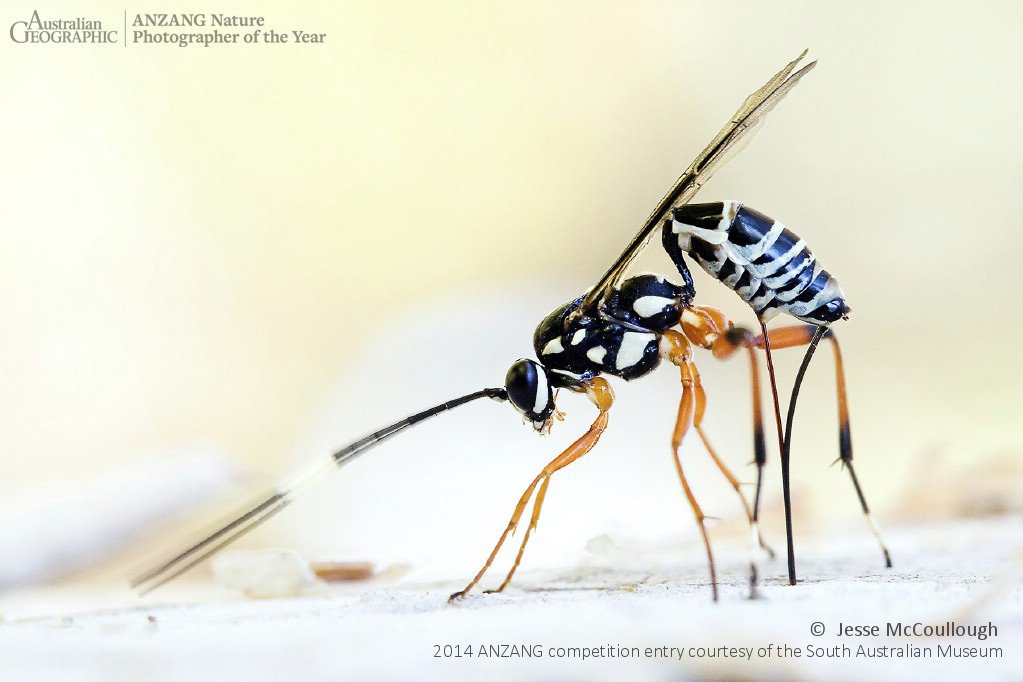
EASTERN OSPREY, PANDION CRISTATUS. A pair of eastern ospreys took up fishing in
my local river for two weeks. After finding their favourite fishing spot, I spent a few
hours taking photographs of them while I was cloaked in camouflage. Fairyland, Lane Cove National Park, New South Wales. Canon EOS 7D, Canon 300mm IS USM L II f2.8 + Canon TC 2X III, 1/2500, f5.6, ISO 1600, handheld
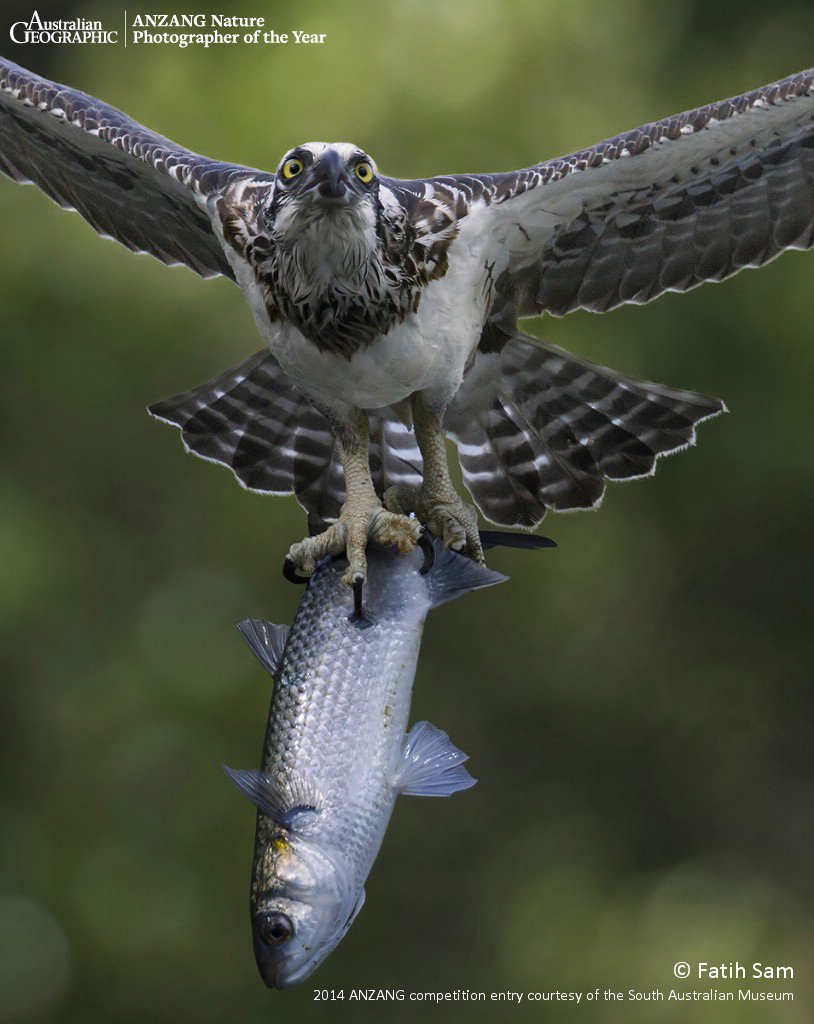
HUMPBACK WHALE, MEGAPTERA NOVAEANGLIAE. Humpback whales migrate to Tonga every year to mate, give birth and nurse their calves. This mother whale is supporting her young baby close to the surface, possibly to help it breathe as it sleeps. Kingdom of Tonga. Canon EOS 5D Mk III, Canon 16-35mm lens f2.8 L, 1/160, f/8, ISO 320, Nauticam. Vanessa Mignon, New South Wales
Photo Credit: Vanessa Mignon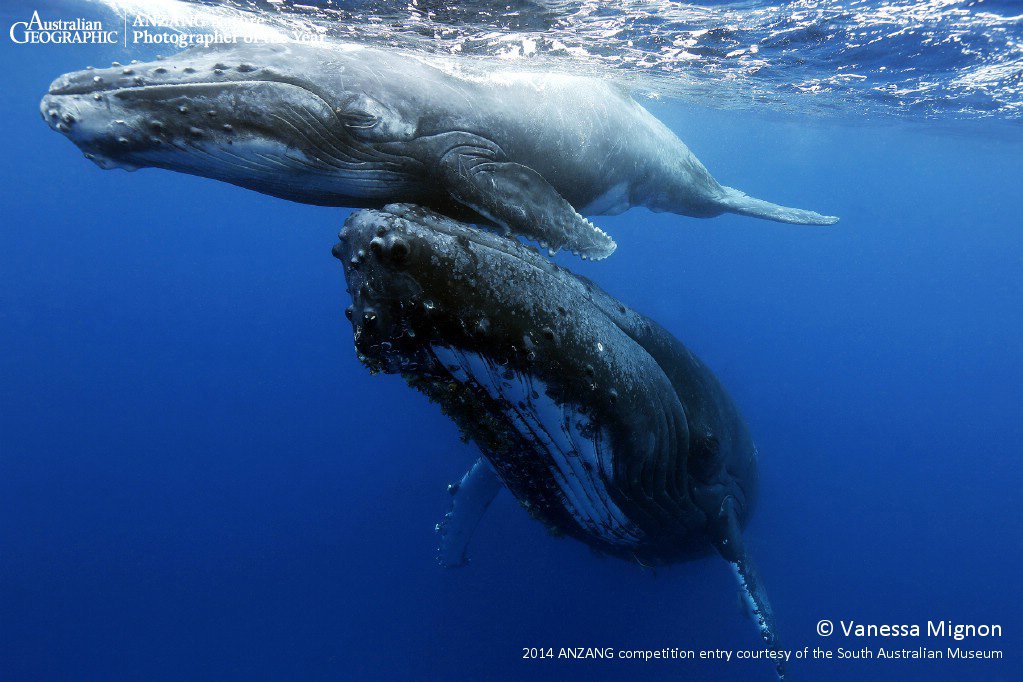
MOVING HOUSE, UNIDENTIFIED SPECIES. A few days before a storm, these ants started moving their nest to higher ground. They were carrying the pale, white, vulnerable larvae to the new home. Workers would preen the larvae with their mouthparts and antennae as they moved, seemingly to ensure it stayed free of debris. Bensville, New South Wales. Canon EOS 5D Mk II, Canon MPE 65mm 1-5x, 1/125, f/16, ISO 400, Canon twin macro flash, handheld.
Photo Credit: Alan Kwok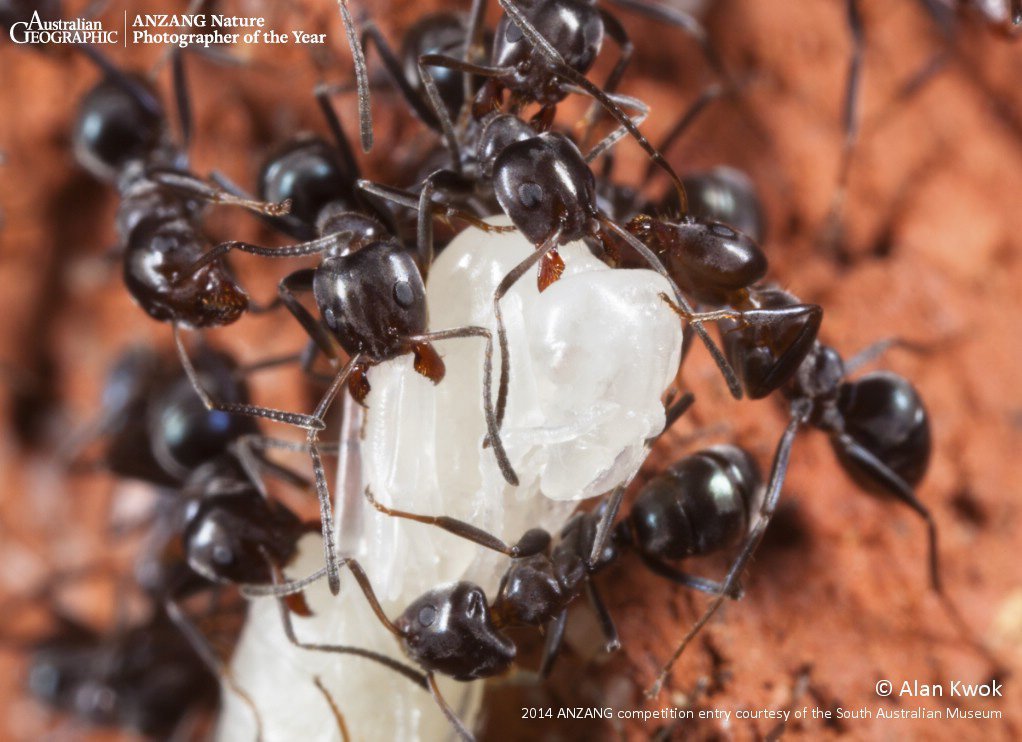
ADELIE PENGUINS, PYGOSCELIS ADELIAE. I was a member of the Australian Antarctic Expedition on the East Antarctic fast ice when a nasty blizzard arrived. As we made our way to the safety of our ship, the dark shapes of a huddle of Adélie penguins could just be discerned amid the starkly beautiful icy landscape. East Antarctica. Canon EOS 5D Mk II, EF24-105mm, f/5.4 L IS USM at 105mm, 1/500, f/19, ISO 200, handheld
Photo Credit: Andrew Peacock
WARATAH ANEMONE,ACTINIA TENEBROSA. I had been trying to capture images of these waratah anemones for several weeks but hadn’t had the perfect day. On this particular day the morning mist created a beautiful sun halo, and, as I took this shot, a gull flew right through the Sun’s orb. Port Kembla Beach, Wollongong, New South Wales
Nikon D300s, Nikon 10.5mm f/2.8 fisheye, 1/320, f/22, ISO 200, Inon Z220 Substrobe 1/4 power, Inon 1/2 stop diffuser, handheld
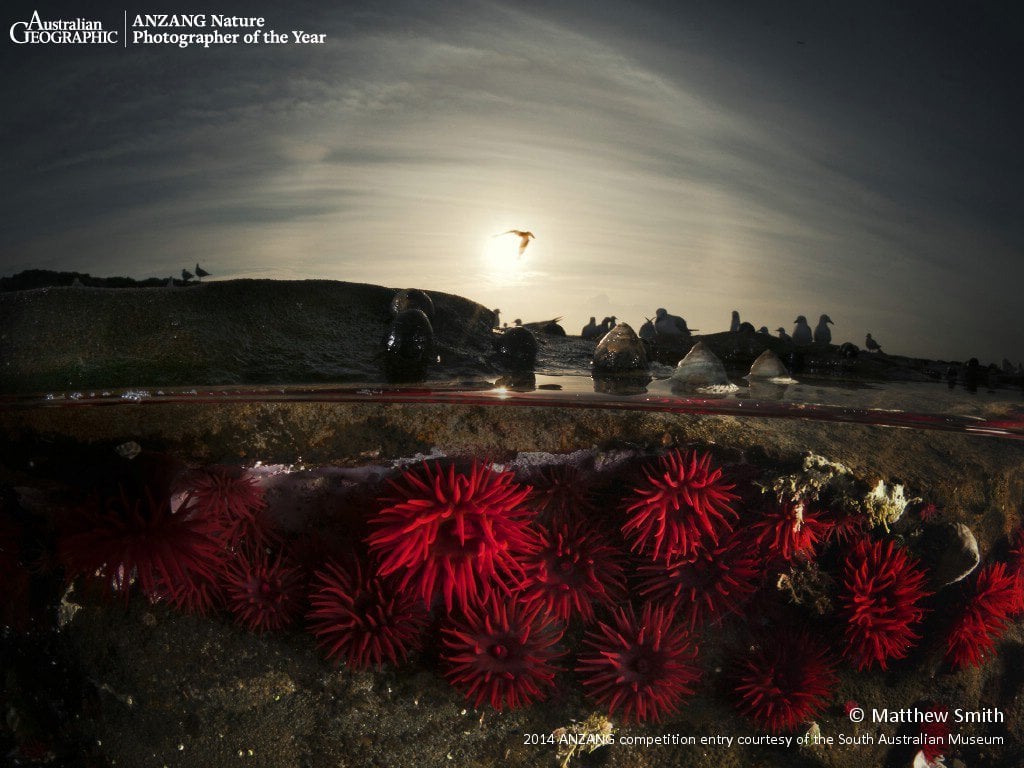
SILVER ORB SPIDER, LEUCAUGE GRANULATA. The backlit spider web is one of the great clichés of nature photography. No wonder – on cold mornings they make for easy subjects. The web was built just beyond the shaded front of a garden shed, allowing the intense back lighting to last for an hour. I had time to drink a coffee first and then find just the right shutter speed to capture the droplets of morning mist. Lake McDonald Botanical Gardens, Sunshine Coast, Queensland. Canon EOS 5D Mk II, Canon 100mm macro, 1/320, f/13, ISO 800 ASA, handheld
Photo Credit: Raoul Slater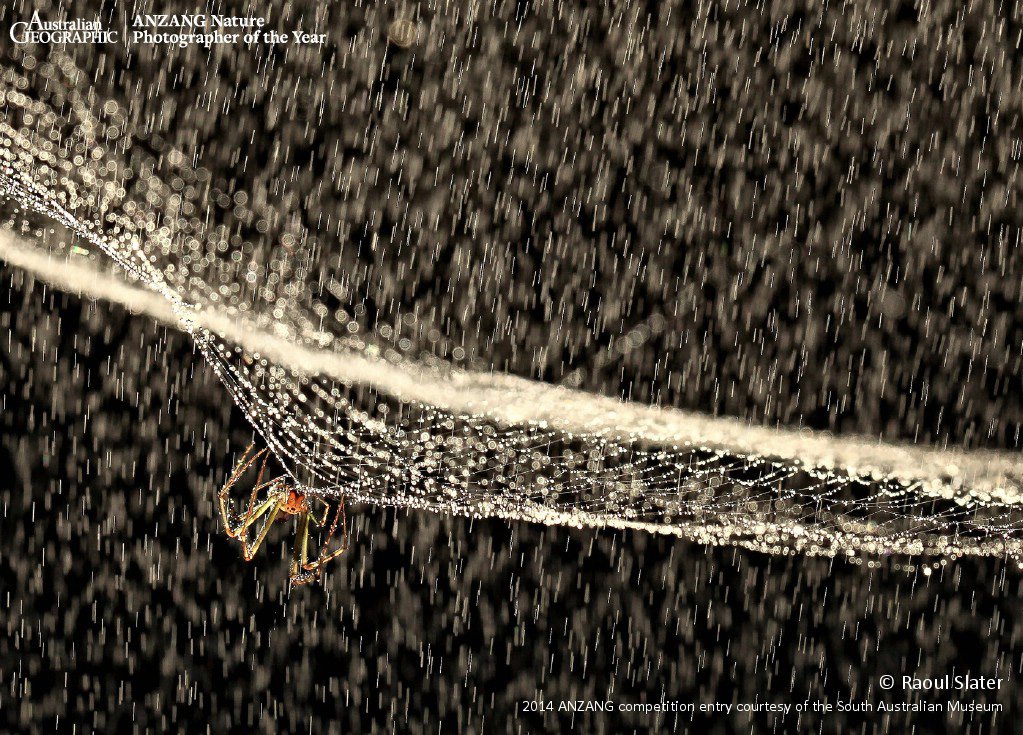
LITTLE RED FLYING-FOXES, PTEROPUS SCAPULATUS. I’d been captivated by a large colony of little red flying-foxes, camped along the Macintyre River at Inverell, NSW. The primeval, cacophonous and pungent ‘Apocalypse Now’ scene prompted me to shoot stills of bats with backlit wings returning to roost on this misty morning. Macintyre River, Inverell, New South Wales. Olympus OMD EM-5, 50-200mm at 200mm + 2x teleconverter, 1/350, f/11, ISO 400, tripod
Photo Credit: Rob Smith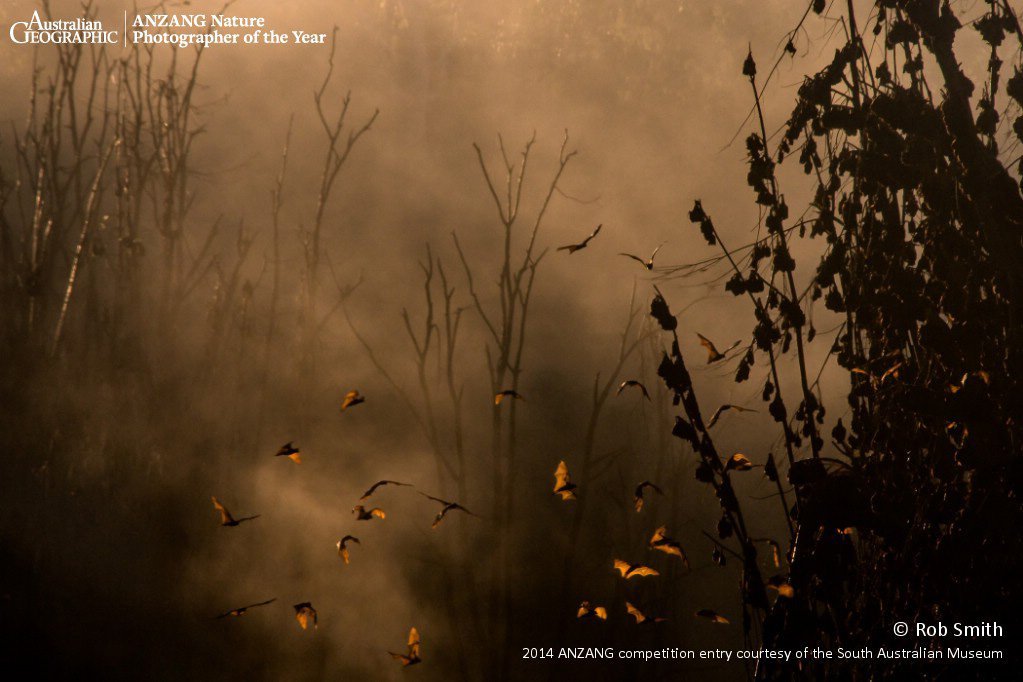
AUSTRALIAN SALMON, ARRIPIS TRUTTA. This school of Australian salmon is waiting to cross over the sandbar into the front gutter of Cheynes Beach, WA, to rest up for
the night on the return run of their annual migration. Cheynes Beach, Cheynes,
Western Australia. Canon EOS 500D, Canon 100-400mm, 1/1600, f/5.6, ISO 400, handheld
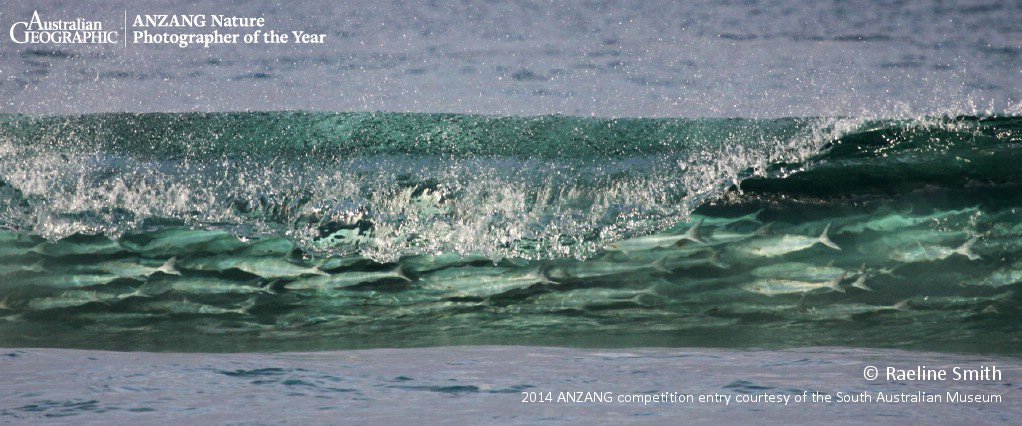
GENTOO PENGUIN, PYGOSCELIS PAPUA. On a grey and overcast day, this gentoo penguin seemed quite comfortable riding along on his personal iceberg. His colleagues had only just returned to the water, and he was, no doubt, not far behind. Paradise Harbour, Antarctica. Canon EOS 7D, EF 70-200mm f/4 L IS USM, 1/800, f/8, ISO 200, handheld
Photo Credit: David Burren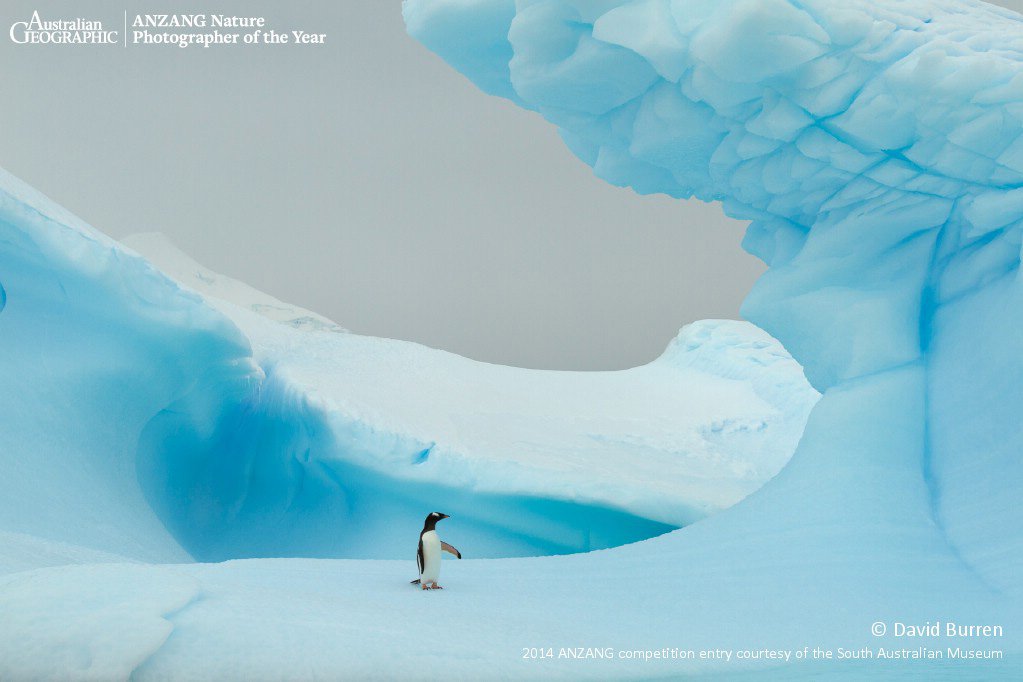
COMMON SEA DRAGAN, PHYLLOPTERYX TAENIOLATUS. I took this photo of a sea dragon while scuba diving among kelp in about 15m of water. This particular sea dragon is a pregnant male, carrying a clutch of eggs at the base of his tail. Kurnell, Botany Bay, New South Wales. Canon EOS 5D Mk III, Canon 16-35mm, f/2.8 lens at 16mm, 1/125, f/8, ISO 200, two Inon Z240 underwater strobes, Hugyfot housing, handheld
Photo Credit: Michael Gallagher
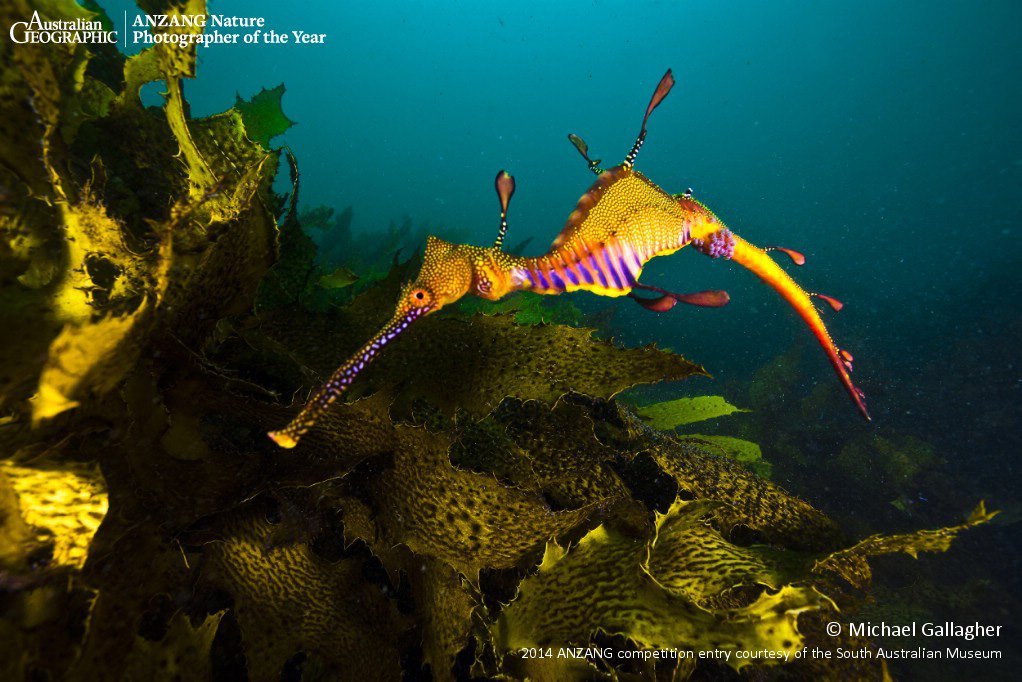
Home Topics Wildlife ANZANG 2014 Animal Behaviour shortlist

